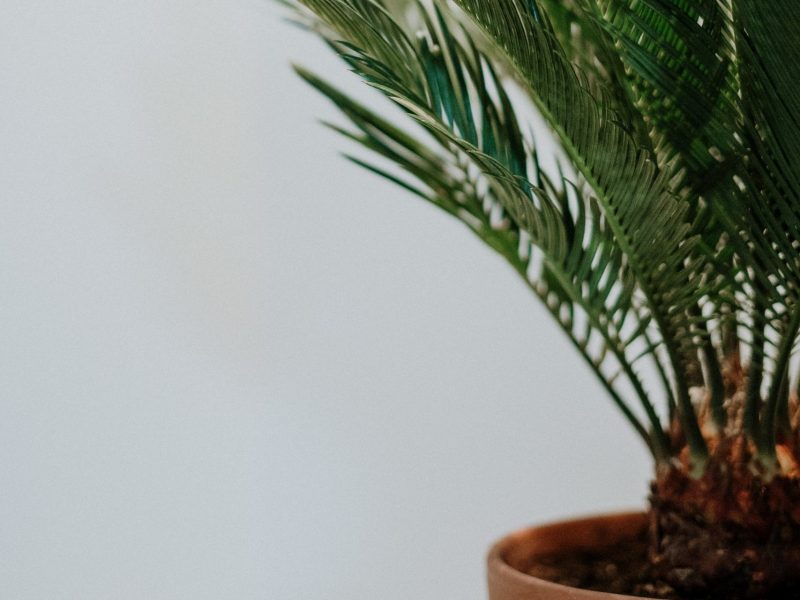
Basic Sago Palm Care
Loved for its feathery foliage and easy care routine, the Sago Palm is the perfect plant if you want to bring some of the tropics right to your home. The great thing about them is they adapt well to a real range of environments, so perfect for that sunny window sill as well as slightly shadier areas of your home as well. It’s important to know that they are slow growers which to many is a real benefit as they won’t outgrow your space any time soon!
Avoid placing your Sago Palm in direct light
Sago Palms need bright but indirect light to thrive. Too much direct light will scorch the leaves and not enough sunlight will lead to a complete lack of growth and wilting leaves.
Water when the soil is dry to touch
You want to make sure that the soil on your Sago Palm doesn’t become too dry or soggy so keeping the right balance is key. Water less in winter to avoid waterlogging the soil and causing root rot.
Sago Palms love high humidity
It’s important you take some steps to boost the humidity levels around your Sago Palm. The easiest ways are misting the leaves, buying a humidifier or using a pebble tray.
Don’t let it get too cold for your Sago Palm
Sago Palms need slightly warmer temperatures and will struggle in anything dramatically below room temperature. Keep them away from any drafty windows or doors as the cold air from outside will shock your plant.
Propagate your Sago Palm by division (if possible)
If you don’t want to bother with seed propagation (we don’t blame you) your best option at propagating a Sago Palm is division. Sago Palms naturally cluster up to form baby palms which can be removed from the mother and propagated.
Sago Palms are extremely toxic
You want to keep your Sago Palm well away from any children or pets as even the smallest amount can be toxic if ingested. Seek medical attention if ingested as there are many side effects.
Sago Palm FAQs
Are Sago Palms toxic?
You want to keep your Sago Palm well away from any children or pets as even the smallest amount can be toxic if ingested. Seek medical attention if ingested as there are many side effects.
Are Sago Palms easy to care for?
Sago Palms are pretty easy to care for as they can adapt to a range of light levels but they do require a little boost to the temperature and humidity.
Can Sago Palms be grown indoors?
Although often grown outdoors, the Sago Palm is a great indoor potted plant as well!
How often should I water my Sago Palm?
You want to make sure that the soil on your Sago Palm doesn’t dry out for longer periods of time but also doesn’t get waterlogged either. It’s all about finding the right balance. Cut back your watering during autumn and winter to avoid the roots rotting.
Sago Palm Common Problems
Why does my Sago Palm have yellow leaves?
If the yellowing starts from the tip and moves its way up the leaf then it is most often caused by overwatering. Replace the soil if waterlogged and adjust your watering schedule going forward.
If the yellowing occurs randomly throughout the plant then this is an indication that it is getting too much direct light. Move your plant to a slightly shadier spot and trim away the worst affected areas.
If your Sago Palm is losing one or two of the bottom leaves occasionally then this is just natural ageing and nothing to worry about if the rate doesn’t increase.
Why isn't my Sago Palm growing?
Sago Palms are very slow growers and may only produce one or two new leaves each year. Be patient, a lack of growth doesn’t mean you aren’t caring for it properly, they are just slow!














